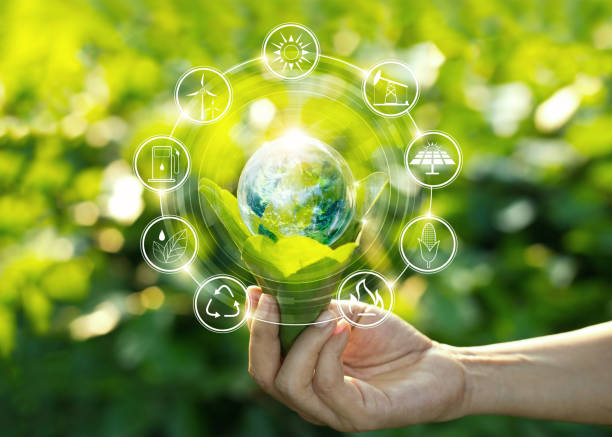Comprehensive Guide to Sustainable Wastewater Management
Sustainable wastewater management is a critical component of modern environmental stewardship, ensuring that water resources are protected while meeting the needs of growing populations and industries. By integrating innovative treatment technologies, resource recovery practices, and circular economy principles, communities can reduce pollution, conserve energy, and even transform wastewater into a valuable source of clean water, energy, and nutrients. This comprehensive guide explores strategies, challenges, and solutions for building resilient wastewater systems that safeguard ecosystems and support long-term sustainability.

The Importance of Sustainable Wastewater Management
Sustainable wastewater management extends far beyond simply disposing of unwanted water. It encompasses a holistic approach to protecting public health, preserving environmental integrity, and conserving water resources for future generations. Conventional wastewater treatment systems, while effective at basic purification, often fail to address the full spectrum of contaminants present in modern wastewater streams, including pharmaceuticals, microplastics, and industrial chemicals.
The consequences of inadequate wastewater management are severe and far-reaching. Water bodies receiving untreated or poorly treated effluent suffer from eutrophication, where excess nutrients trigger harmful algal blooms that deplete oxygen and create dead zones inhospitable to aquatic life. Additionally, waterborne diseases continue to pose significant public health risks in regions lacking proper sanitation infrastructure. By implementing sustainable approaches, communities can mitigate these risks while simultaneously reducing energy consumption, greenhouse gas emissions, and operational costs associated with traditional treatment methods.
Climate change further underscores the importance of sustainable wastewater management, as extreme weather events place additional strain on aging infrastructure. Resilient systems designed with sustainability principles can better withstand these challenges while providing essential services to communities.
Innovative Treatment Technologies and Practices
The field of wastewater treatment has witnessed remarkable technological advancements in recent years. Moving beyond conventional activated sludge processes, cutting-edge technologies now offer enhanced performance with reduced environmental footprints. Membrane bioreactors (MBRs) combine traditional biological treatment with membrane filtration, producing exceptionally high-quality effluent suitable for reuse applications while occupying significantly less space than conventional plants.
Constructed wetlands represent another innovative approach, harnessing natural ecological processes to remove contaminants through a combination of physical filtration, microbial degradation, and plant uptake. These nature-based solutions offer low-energy alternatives particularly well-suited for rural communities or decentralized applications. The plants absorb nutrients like nitrogen and phosphorus that would otherwise contribute to eutrophication, while simultaneously providing habitat for wildlife and aesthetic value for communities.
Advanced oxidation processes employing ozone, hydrogen peroxide, or ultraviolet light can effectively eliminate persistent contaminants resistant to conventional treatment, including pharmaceutical residues and personal care products. These technologies target specific pollutants at the molecular level, breaking them down into harmless byproducts.
Digital solutions also play an increasingly important role in optimizing wastewater treatment. Smart sensors and artificial intelligence algorithms now enable real-time monitoring and adaptive control of treatment processes, optimizing chemical dosing and energy consumption while ensuring consistent effluent quality even under variable influent conditions.
Resource Recovery and the Circular Economy
Perhaps the most transformative shift in wastewater management thinking involves reimagining treatment facilities not merely as pollution control infrastructure but as resource recovery centers. The circular economy approach recognizes wastewater as a valuable reservoir of water, energy, and nutrients rather than a liability requiring disposal.
Water reclamation stands as the most direct application of resource recovery, with treated effluent increasingly used for agricultural irrigation, industrial processes, groundwater recharge, and even potable reuse in water-scarce regions. Advanced treatment trains incorporating membrane filtration, activated carbon, and disinfection can produce water meeting or exceeding drinking water standards.
Energy recovery represents another significant opportunity. Anaerobic digestion of primary and waste activated sludge generates biogas containing approximately 60-70% methane, which can be captured and used for combined heat and power generation or upgraded to renewable natural gas standards for injection into existing distribution networks. Some facilities have achieved energy self-sufficiency through this approach, generating more electricity than they consume for treatment operations.
Nutrient recovery technologies now enable the extraction of phosphorus and nitrogen from wastewater streams, producing commercial-grade fertilizers while preventing these nutrients from causing environmental harm. Struvite precipitation processes, for example, can recover phosphorus in a crystalline form suitable for agricultural applications, addressing both pollution concerns and resource conservation goals simultaneously.
Beyond these conventional resources, researchers are exploring recovery of value-added products from wastewater, including bioplastics produced by specialized bacteria, cellulosic materials from toilet paper, and even proteins and lipids for industrial applications. These emerging technologies further expand the potential contribution of wastewater facilities to circular economy objectives.
Implementation Challenges and Success Factors
While sustainable wastewater management offers numerous benefits, implementation faces significant challenges. The capital costs of advanced treatment technologies often exceed those of conventional systems, creating financial barriers particularly acute for smaller communities or developing regions. Regulatory frameworks may inadvertently discourage innovation by prescribing specific treatment technologies rather than performance standards.
Public perception represents another challenge, particularly for water reuse initiatives. The “yuck factor” associated with treated wastewater can impede adoption even when the quality meets or exceeds applicable standards. Successful implementation requires comprehensive stakeholder engagement, transparent communication about treatment processes and monitoring protocols, and education programs highlighting the safety and environmental benefits of sustainable approaches.
Successful case studies demonstrate these principles in action. Singapore’s NEWater program has overcome initial public resistance through rigorous quality control, extensive education campaigns, and gradual implementation, now providing approximately 40% of the nation’s water needs through advanced treatment and reuse. Similar success stories can be found worldwide, from California’s Orange County to Australia’s agricultural regions.
The transition to sustainable wastewater management ultimately requires an integrated approach combining technological innovation, financial mechanisms, regulatory reform, and public engagement. By addressing these factors comprehensively, communities can transform wastewater treatment from an environmental obligation into an opportunity for resource conservation, economic development, and climate resilience.




